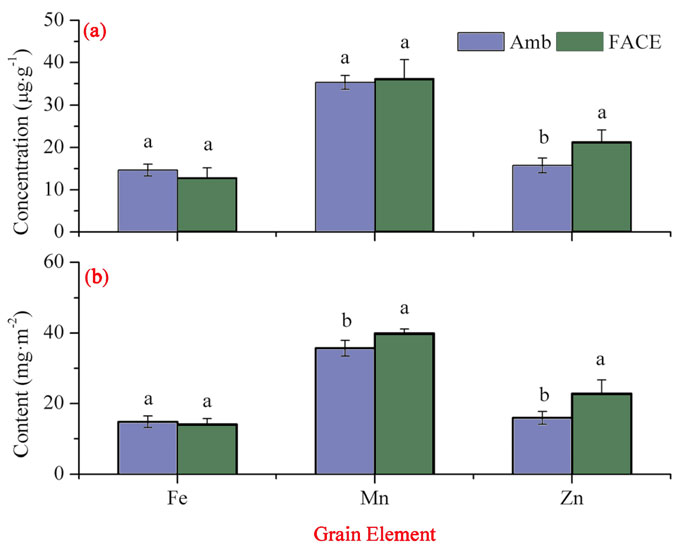| Tweet | Follow @co2science |
Paper Reviewed
Li, C., Zhu, J., Zeng, Q. and Liu, G. 2020. Changes in microelement availability in a paddy field exposed to long-term atmospheric CO2 enrichment. Journal of Soils and Sediments https://doi.org/10.1007/s11368-020-02601-7.
Introducing their study, Li et al. (2020) note that "plant-soil interactions in the context of elevated atmospheric CO2 have received much attention and micronutrients play an important role in plant development and reproduction." However, much remains to be learned as to how future changes in atmospheric CO2 may alter micronutrient availability and their concentrations in plant organs, which can affect plant growth and yield.
Hoping to provide some information in this regard, Li et al. examined the concentrations of iron (Fe), manganese (Mn) and zinc (Zn) in rice and the availability of these micronutrients within the surrounding soil under ambient (370 ppm) and elevated (566 ppm) CO2 concentrations. The experiment was conducted at Xiaoji town, Jiangdu City, Jiangsu Province, China, on a FACE site that had been in operation for 10 years. Given the length of time that CO2 enrichment had been in operation at the site, the authors felt any long-term effect of elevated CO2 on micronutrient availability and concentration would likely be evident.
In discussing their findings Li et al. report, not surprisingly, that CO2 enrichment "stimulated rice growth and increased the dry matter production." With respect to nutrient availability, the scientists note that "CO2 enrichment enhanced the input of soil organic matter and improved microbial activity." The higher microbial activity, in turn, likely increased soil nutrient mineralization and supplied more available nutrients. The end result was that "the bio-availability of Fe, Mn, and Zn in 0-10 cm soil increased under elevated CO2."
Support of the above scenario is presented in Figure 1, which shows the content and concentration of the three studied micronutrients within the rice grain at harvest. Although the content and concentration of iron remained unchanged, these two parameters increased for both Mn and Zn under elevated CO2.
In commenting on their work, the four Chinese researchers conclude that "elevated CO2 still enhanced dry matter production and accumulation of Fe, Mn, and Zn in rice after 10 years [of] CO2 treatment." Consequently, no management strategy was needed to supply these necessary micronutrients in order to achieve the CO2-induced dry matter enhancement.

Figure 1. Rice grain concentration and content of Fe, Mn and Zn at maturity under ambient (Amb) and elevated (FACE) CO2 conditions. Data represented the mean (± SE) of three replicates. Same letter indicates that non-significance existed between Amb and FACE. Source: Li et al. (2020).




